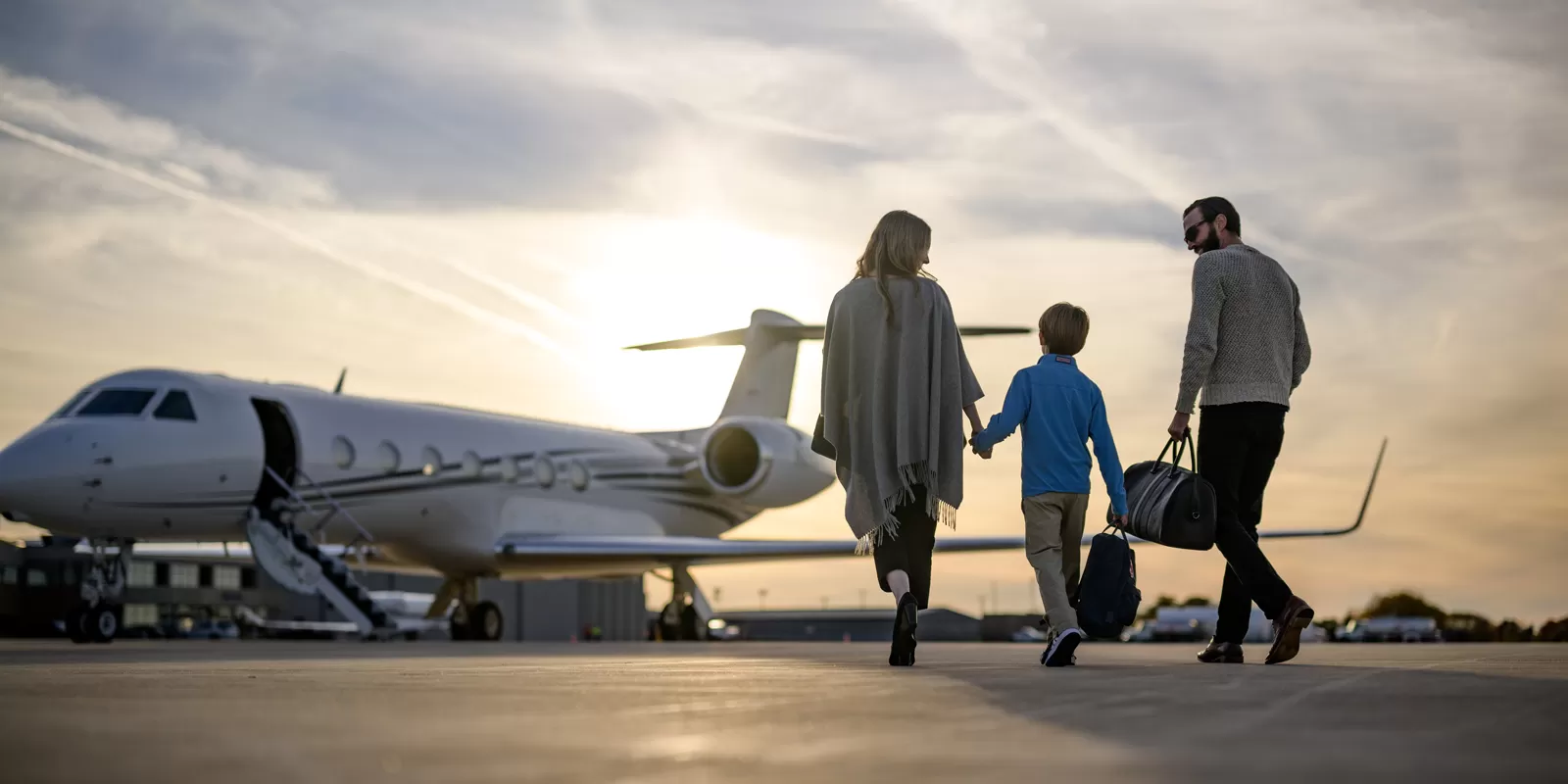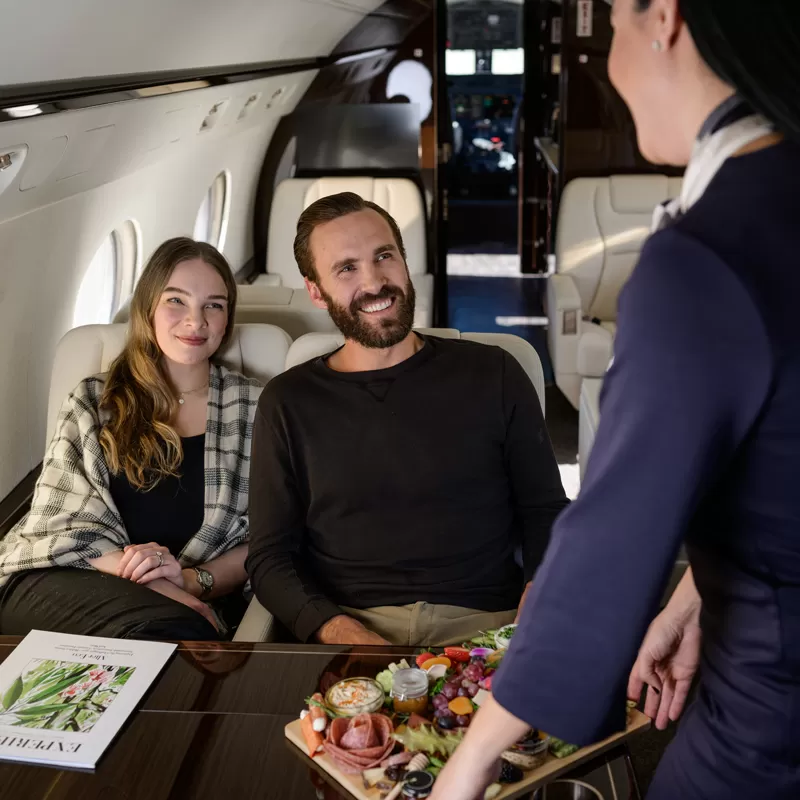
The Private Aviation Lifecycle: Considerations for Getting Started
Jun 23, 2024
The appeal and convenience of private aviation is undeniable. Understanding and navigating the private aviation lifecycle takes more planning and consideration.
As a leading private aviation partner with 60 years of experience in the industry, we witness firsthand the progression from charter passenger to aircraft owner. Most commonly, this progression starts with interest or initial exposure and moves to more detailed research, before acquisition or commitment, and outfitting and customization. The private aviation lifecycle encompasses the journey of discovery and education that typifies most entrants into the rare air of flying private.
We start with an introduction to the private aviation lifecycle from 30,000 feet up: who typically owns and flies private aircraft, how your needs and perspectives change over time, and how your initial exposure and evolving experience and engagement informs your future through private aviation.
In the hangar
There are two common user profiles for private aviation. One is companies, typically those with annual revenues of at least $50-$100 million. These companies frequently need to move employees efficiently, from engineers to executives, with the resources to make it a worthwhile investment. Commercial airlines serve around 500 U.S. airports; however, private aviation has access to anywhere from 3,500-5,000 airports, allowing passengers to get closer to a chosen destination and save a great deal of time. The second user profile is high-net-worth individuals. They too have the resources to make the speed, convenience, and quality of life elements of private aviation well worth the cost.
Now boarding
For many users, the entrance into the world of private aviation is through charter aircraft: transporting your family or your employees where they need to be. Usage rates may vary considerably at first, however, because most people who experience the convenience, speed, privacy, and security of private aviation have a tough time returning to flying commercial, that usage profile tends to grow over time. Private aviation charter passengers start identifying new opportunities to fly private, and once their schedule expands from a handful of trips a year to multiple monthly flights, the cost-benefit equation starts to shift. Some travelers are perfectly content to continue to use charter services to meet their needs. But at a certain point, many start to realize that it might make sense to own their own aircraft.
Clear the runway
There is a clear cost differential associated with private aviation compared to flying commercial, whether you’re renting time in private aircraft through a charter or purchasing an aircraft outright. There are big differences between a single-engine turboprop and a multi-engine intercontinental jet to consider, but all require a sizable investment and ongoing maintenance and operating expenses, before you even consider your itinerary. A pre-owned light jet might start at $3-$7 million in acquisition costs, with around $500,000-$1,000,000 in fixed and variable costs per year, depending on usage. Some of those costs might be offset by deploying an aircraft into service as a charter aircraft, but unavoidable maintenance and inspection costs are non-negotiable from a safety and regulatory compliance standpoint.
For most prospective buyers, purchasing private aircraft is less about the raw ROI and cost analysis and more about personal preference and perspective. From the point of view of business owners and other individuals, private aircraft really are time machines. The decision to rent or own is not dissimilar to deciding if you want to stay in a vacation rental or purchase your own vacation home: it depends heavily on personal preference.
Taking off
Our experience with the private aviation lifecycle demonstrates another truth: private aviation travelers don’t often downgrade. Their initial experience is almost always positive, and they want to fly further without refueling or have enough space to bring the entire family on a trip. Oftentimes we’ll see airplanes used for both business and personal needs.
The step from passenger to owner is not one to be taken lightly. Aspiring owners are often surprised by the cost and complexity of the regulatory environment, as well as the strict protocols and rigorous and regular inspections and maintenance—regardless of whether an aircraft is in regular operation or not.
Owning a plane is not like owning a car. The legal and tax landscape is unfamiliar to non-experts. Prospective owners need to find someone to explain these issues and help them determine how to identify what private aviation solution makes the most sense.
Cruising altitude
First-time aircraft buyers have a steep learning curve, however progression along that curve typically happens quickly. While it is somewhat market-dependent, the typical timeline from expressing interest to owning an aircraft and boarding for your first private flight is typically 6 months or more.
Because most people are introduced into the world of private aviation without a great deal of industry experience, identifying an experienced and capable private aviation provider is critically important. Ideally, your private aviation partner can offer a high-touch service model, taking the time to listen and understand your needs and subsequently make sure you know everything you need to make informed decisions.
As a regionally focused provider with international reach, Pentastar is the ideal size to provide prospective private aviation buyers with the right combination of high-level infrastructure with personal service and attention. Because we don’t manage hundreds of airplanes, but dozens, we spend time with clients and prioritize clear and consistent communication and counsel throughout the process. We have a vested interest in matching each client with the right plane—and the right service model. To that end, we provide a detailed cost analysis based on projected needs and usage, share actual cost sheets in lieu of estimates, and even let clients spend time in aircraft to make sure they are making the right decision.
The last thing any reputable private aviation provider wants is for a client to make a big investment that doesn’t work. The payoff for those who experience the private aviation lifecycle in a thoughtful, educated, and informed way is an asset that can literally transform your life and get you anywhere you need to be.

